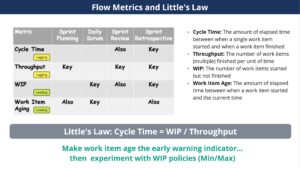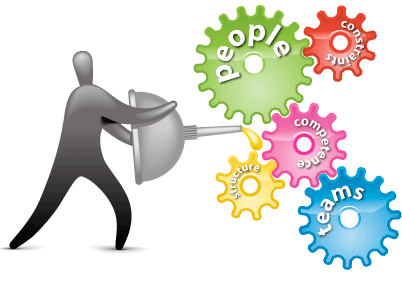 Recently Colleen Johnson and I explored the world of organizational agility. Our discussion centered on the transformative role that carefully selected metrics play in managing and optimizing the flow of value through any business system.
Recently Colleen Johnson and I explored the world of organizational agility. Our discussion centered on the transformative role that carefully selected metrics play in managing and optimizing the flow of value through any business system.
The Critical Role of Actionable Metrics for Organizational Agility
We kicked off our chat by stressing the importance of actionable metrics over “data collection.” Colleen pointed out that the objective isn’t to drown in reports or get lost in color-coded dashboards. Instead, we aim to employ metrics that catalyze decisive actions and foster significant changes within teams and systems. This approach shifts the focus from passive observation to active management of processes.
The Power of Metrics in Agile Management: And what that means for us is using and tracking metrics that are going to drive your team to some action, not just creating dashboards or red light, yellow light, green light reports. Share on XCore Metrics for Measuring Flow
Throughout the conversation, Colleen and I expand on four pivotal metrics essential for measuring the flow of work within a team, a system (teams of teams), and organizations (a portfolio of systems):
- Work In Progress (WIP): I discussed this leading indicator, which tracks the number of work items that have been started but not yet finished. Understanding WIP helps teams manage their workload and capacity more effectively, preventing bottlenecks before they start.
- Throughput: Colleen described this lagging indicator, which measures the number of work items completed within a specific unit of time. This metric offers insights into the team’s output and operational efficiency, serving as a benchmark for performance evaluation.
- Work Item Age: I covered another leading indicator, which calculates the time elapsed since work on an item began. This metric is crucial for identifying delays and pinpointing where bottlenecks are occurring in the workflow.
- Cycle Time: Colleen explained this metric, which measures the total time taken from when work begins on an item until it is completed. As a lagging indicator, cycle time helps teams assess their process speed and identify opportunities for streamlining tasks.
Bonus Metric: Employee Engagement
I introduced a bonus metric that often goes overlooked but is vital for any organization: employee engagement. Referencing a Gallup poll, I highlighted a concerning statistic showing that only about 33% of employees are actively engaged at work. This metric is crucial for assessing organizational culture and employee satisfaction, which directly impacts productivity, innovation, and retention rates.
 Are you finding value from the content and resources on my website? Show your appreciation by buying me a virtual coffee.
Are you finding value from the content and resources on my website? Show your appreciation by buying me a virtual coffee.Predictive Power of Metrics
Colleen elaborated on how these metrics, especially throughput and cycle time, can be utilized not only for retrospective analysis but also for predictive insights. By employing Monte Carlo simulations, organizations can leverage past performance data to forecast future outcomes. This method allows for planning without the traditional reliance on estimates based on complexity or effort, which are typically inaccurate guesses.
Forecasting with Monte Carlo Simulations: We can actually leverage our past throughput data to run a simulation to help us start to see when future work will be completed. And you don't need a ton of data for this. Share on XSystem Stability and Opportunities for Improvement
We also discussed how the four flow metrics contribute to understanding and enhancing system stability. Colleen emphasized that a stable system is inherently more predictable and efficient. By monitoring variations in these metrics, teams can pinpoint areas for improvement and adjust their processes to maintain optimal performance.
Practical Steps to Get Started with Flow Metrics
We concluded our chat with practical advice on how to start leveraging these metrics effectively. The key is simplicity: know when your workflow starts and ends. These two data points are all you need to begin measuring and improving your processes.
Looking Ahead to Enhance Organizational Agility
For those eager to dive deeper into using flow metrics and enhancing organizational agility, we recommended exploring additional resources and tutorials available via Prokanban’s website as well as the books listed below.
Experiment with these metrics, adjust based on feedback, and continuously seek ways to improve their processes. By embracing these practices, teams can adapt swiftly and effectively, ensuring continuous improvement and success.
 Did this article help you out? Show your appreciation by buying me a virtual coffee. Help fuel more great content!
Did this article help you out? Show your appreciation by buying me a virtual coffee. Help fuel more great content! 

